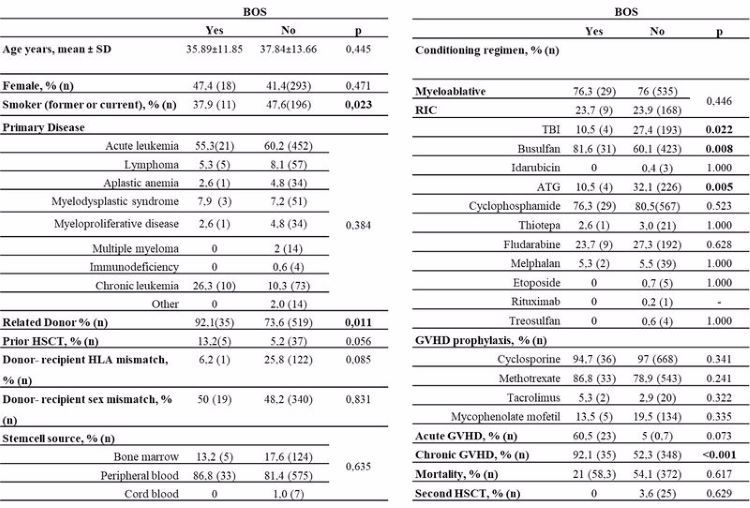Abstract
Introduction: Survival is prolonged after HSCT, however bronchiolitis obliterans syndrome (BOS) remains as a significant cause of mortality and morbidity.
Aim: We aimed to determine the incidence of BOS and the risk factors that play role in its development; pulmonary function tests (PFT) results and prognosis of patients who had BOS.
Materials and Method: In this retrospective study, patients who had survival time more than 100 days after transplantation were included.
Results: In this study, 38(5,1%) of 745 patients had BOS. Univariate analysis showed that busulfan usage, HSCT from related donor, chronic GVHD were risk factors for the development of BOS.The incidence of BOS was lower in patients who used total body irradiation and ATG in the conditioning regimen. Besides, it was found the risk of BOS increased in case of recurrent HSCT (Figure 1). The incidence of pneumothorax was higher in BOS group. Mortality rate was higher in BOS group, however this difference was not statistically significant. Follow-up spirometry results at 6, 12, 18, and 24 months after HSCT were lower than patients who didn?t have BOS. Pre-transplant spirometry didn?t predict the development of BOS.
Figure 1. Comparison of demographics and HSCT characteristics of patients with and without BOS

Conclusion: Prospective studies with standard follow-up procedures are required to determine the risk factors for BOS development.